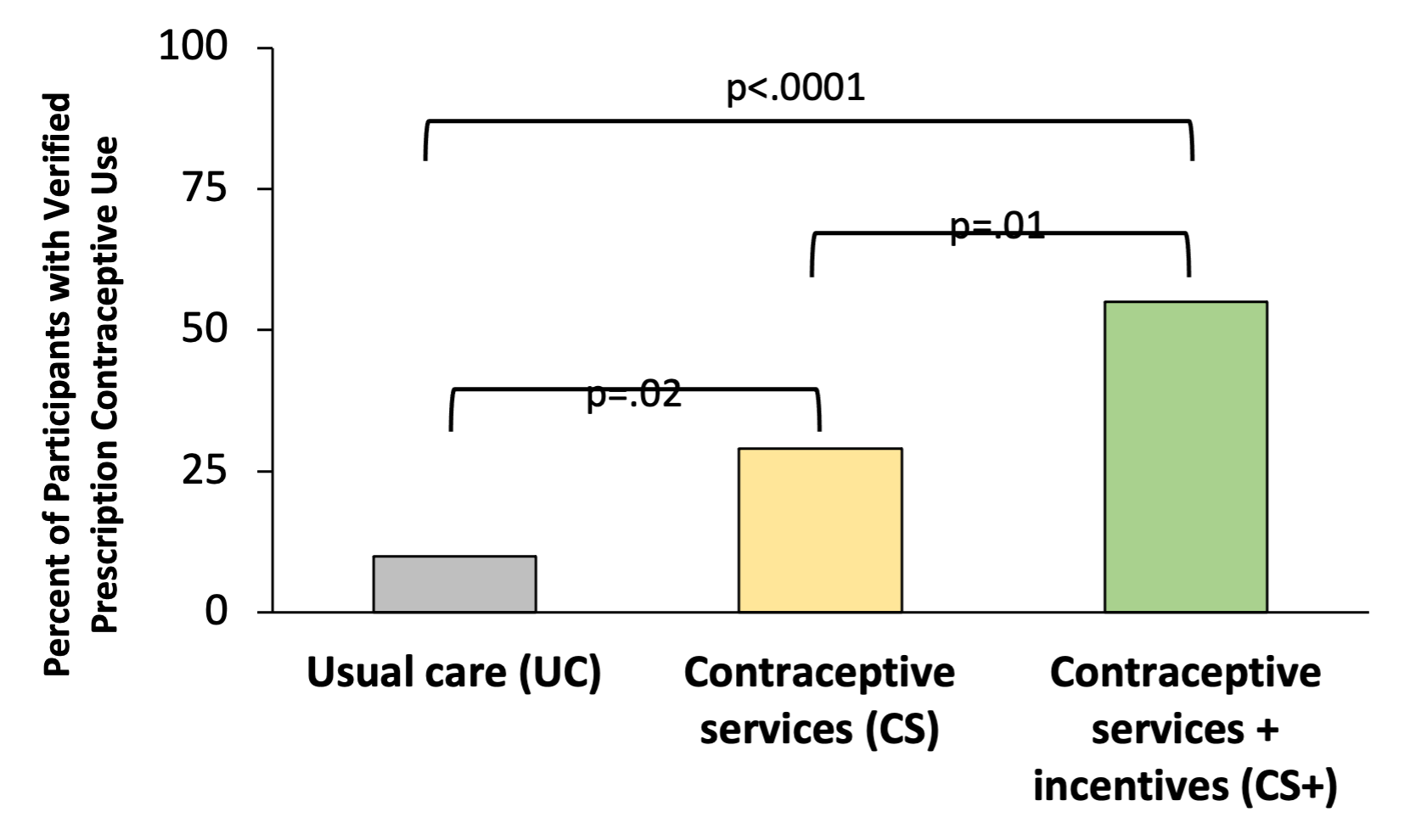Contraceptive services, financial incentives may help those with OUD prevent unintended pregnancy
Among women with opioid use disorder (OUD) at high risk for unintended pregnancy, onsite contraceptive services coupled with financial incentives to attend follow-up visits to assess contraceptive satisfaction was a significantly more efficacious and cost-beneficial intervention than without incentives or with usual care, according to a prospective randomized clinical trial in JAMA Psychiatry.
“Ten years ago, we published a study that found that 86% of a large sample of pregnant women using opioids reported that their pregnancies were unintended. That rate is nearly double that of the general population,” said principal investigator Sarah Heil, PhD, a professor of psychiatry and psychological science at the University of Vermont Larner College of Medicine in Burlington. “This suggested a substantial unmet contraceptive need among women with OUD, but there was very little in the scientific literature about how to address the gap between women’s reproductive intentions and their contraceptive behavior.”
Sarah Heil, PhD

The current study consisted of 138 women, aged 20 to 44, who were receiving medication for OUD and at high risk for an unintended pregnancy at trial enrollment between May 2015 and September 2018.
The women were randomly assigned to receive 1 of 3 conditions: usual care like information about contraceptive methods and community healthcare facilities (the control group, n = 48); onsite contraceptive services adapted from the World Health Organization (WHO), including 6 months of follow-up visits to assess method satisfaction and delivered in a facility colocated with the Chittenden Clinic, an opioid treatment program in Burlington (n = 48); and the same onsite contraceptive services, plus financial incentives for attending the follow-up visits (n = 42).

“The incentives were gift cards, not cash, that progressively increased in value from a low of $15 to a high of $47.50,” Heil told Contemporary OB/GYN®. “Each participant could choose gift cards for retailers that she preferred. But the women were never required to use a method, and incentives were not linked in any way to contraceptive use.”
Follow-up visits occurred once a week for 2 months, followed by every other week for 2 months, then monthly for the last 2 months, “because data shows prescription contraceptive discontinuation is highest right after initiation and then progressively decreases over time,” Heil said.
The percentage of participants with verified prescription contraceptive use at the 6-month end-of-treatment assessment was 10.4% for usual care; 29.2% for contraceptive services without incentives; and 54.8% for contraceptive services with incentives (P < .001).
Those effects also were sustained at the 12-month final assessment: 6.3%, 25.0%, and 42.9%, respectively (P < .001).
The percentage of participants with an unintended pregnancy during the 12-month trial was 22.2%, 16.7%, and 4.9%, respectively (P = .03).
Each dollar invested also yielded an estimated $5.59 in societal cost-benefits for contraceptive services vs. usual care; $6.14 for contraceptive services plus incentives vs. usual care; and $6.96 for combining incentives with contraceptive services vs. contraceptive services alone.
“We were surprised that about 50% of the participants randomized to each study condition said they wanted a long-acting reversible contraceptive (LARC), such as an intrauterine device (IUD) or implant,” Heil said. “Despite this, none of the participants in the usual care condition were using a LARC method at either of the 2 trial assessments. This underscores the need for interventions like the 2 we tested, which resulted in approximately 20% and 40% of participants being given a LARC method.”
Clinicians should be aware that many women with OUD at risk for unintended pregnancy are interested in more effective contraceptive methods, including LARCs, but rarely are able to secure them in the current health care system, according to Heil. “Colocating contraceptive services with an opioid treatment program, with or without the addition of incentives, helps decrease unmet contraceptive need, so we encourage contraceptive service providers to look for opportunities to work with opioid treatment programs in their community,” she said.
__
Disclosure
Heil reports no relevant financial disclosures.
Reference
Heil SH, Melbostad HS, Matusiewicz AK, et al. Efficacy and cost-benefit of onsite contraceptive services with and without incentives among women with opioid use disorder at high risk for unintended pregnancy: a randomized clinical trial. JAMA Psychiatry. Published online July 14, 2021. doi:10.1001/jamapsychiatry.2021.1715
Recap on reproductive rights with David Hackney, MD, MS
December 20th 2022In this episode of Pap Talk, we spoke with David Hackney, MD, MS, maternal-fetal medicine physician at Case Western Reserve University and chair of ACOG's Ohio chapter for a full recap of where restrictions on reproductive rights have been and where they're going.
Listen
In this episode of Pap Talk, Gloria Bachmann, MD, MSc, breaks down what it means to be a health care provider for incarcerated individuals, and explores the specific challenges women and their providers face during and after incarceration. Joined by sexual health expert Michael Krychman, MD, Bachmann also discusses trauma-informed care and how providers can get informed.
Listen
